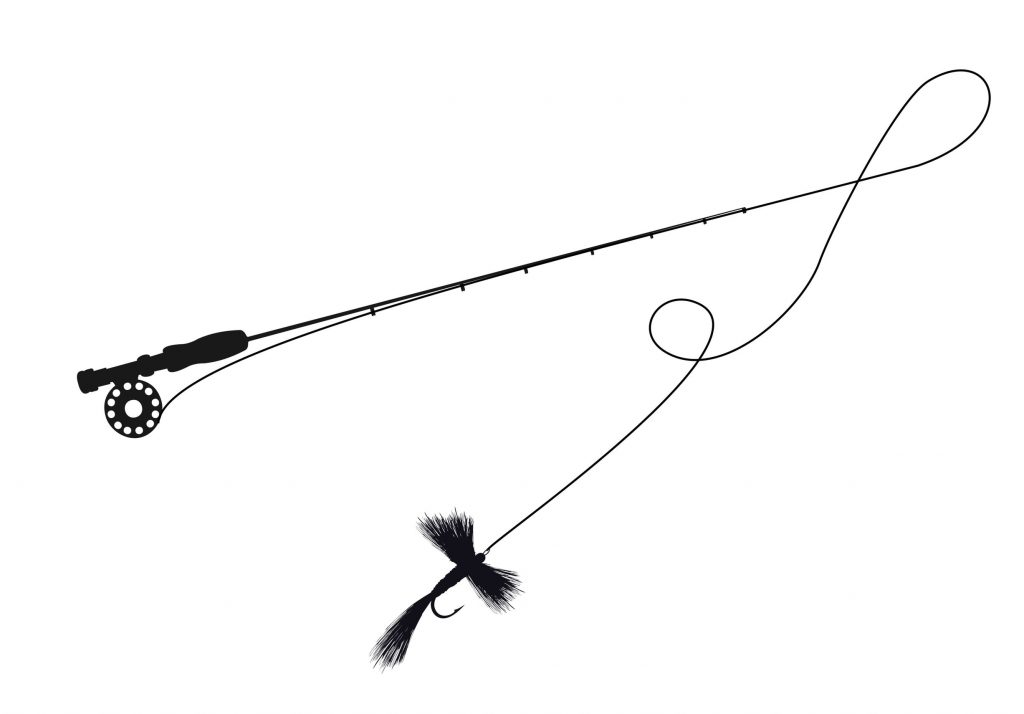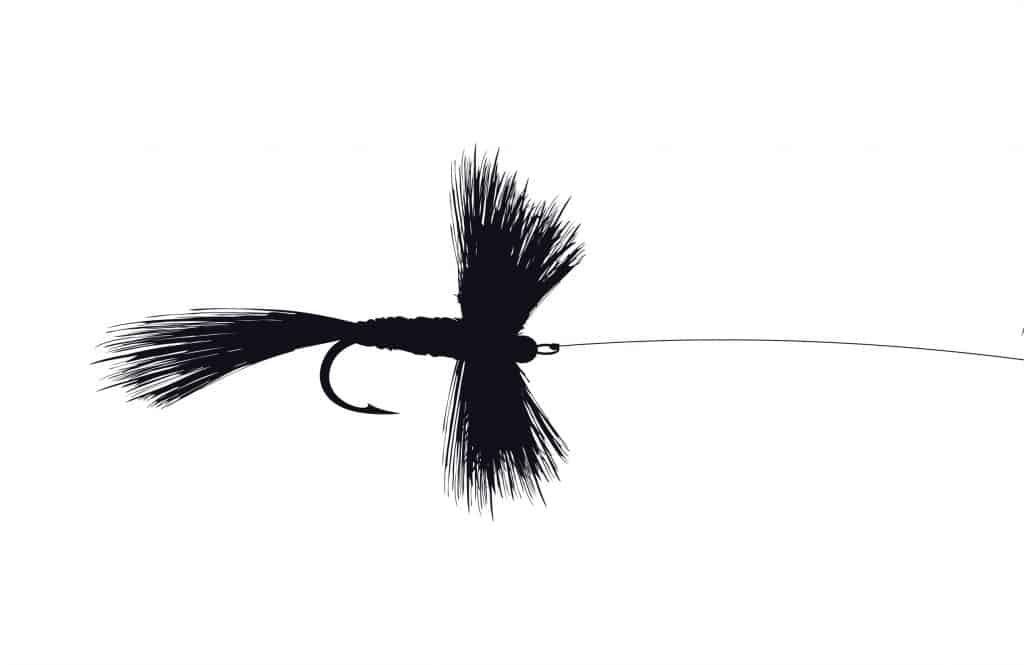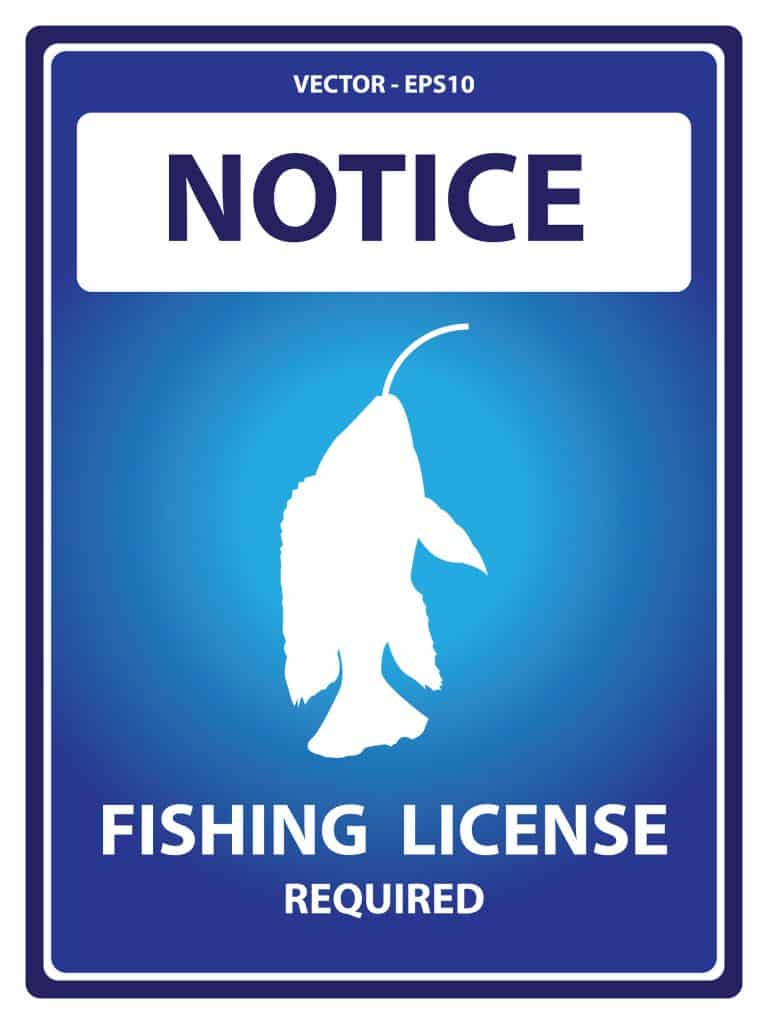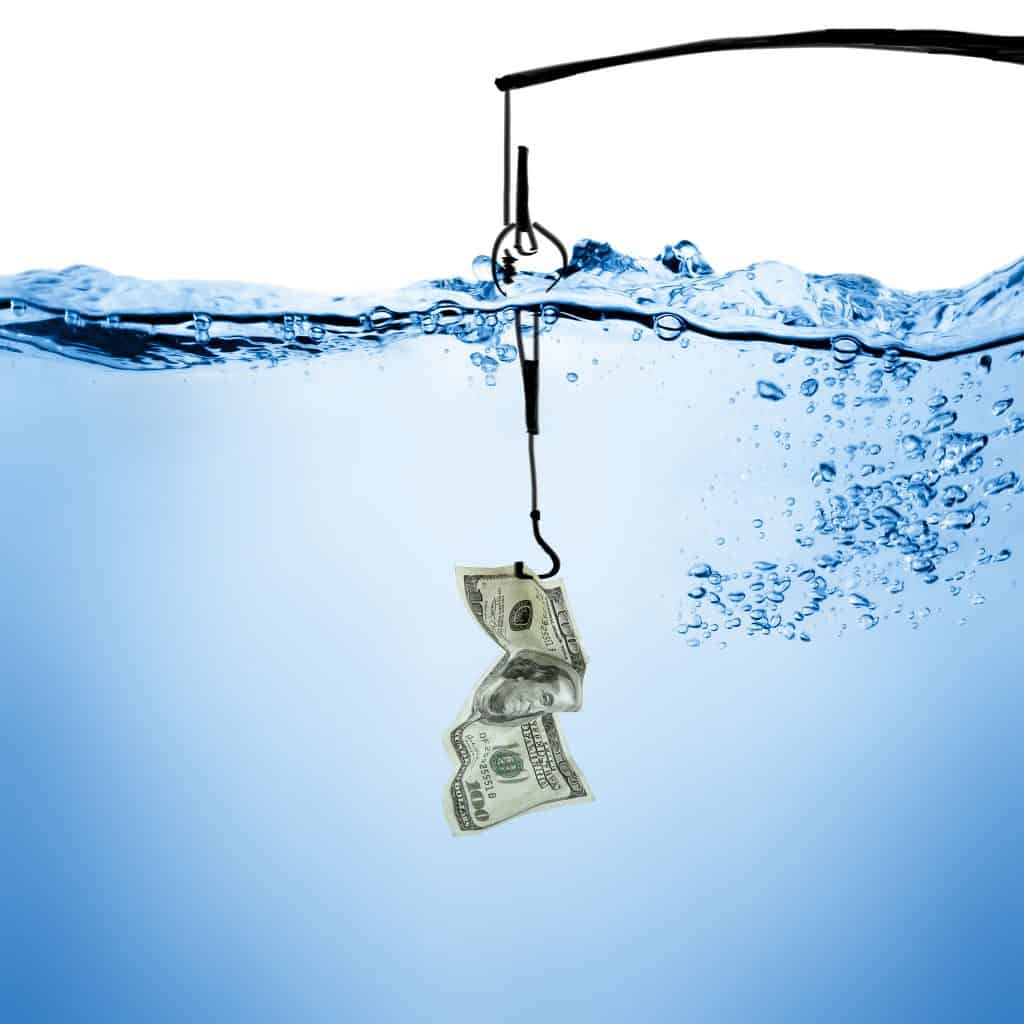
If you’re interested in learning how to fish, one of the main things on your mind will probably be the startup price. Before you can get out on the river and start catching fish, there’s some equipment and initial purchases you’ll need to make.
How much does it cost to buy fly fishing gear? The initial cost of a basic fly rod, reel, line, and fly will usually be around $200. If additional equipment such as waders, boots, a vest, and a license are added, the basic total can cost up to $400.
Now that the scary initial numbers are out of the way, we can take a closer look at each of the elements and why you’ll want to get each of them. The numbers listed above just make up the average starting cost.
There are always ways to save and spend money when you’re getting into a new hobby!
Shopping for a Fly Rod
One of the most important pieces of equipment you’ll need to purchase when getting started with fly fishing is a fly rod. Fly rods are long, flexible fishing poles that usually have a weighted line. This weighted line is important because fly lures are too light to aim without it.
Fly rods are different than bait or spin fishing rods and are best to purchase new. You can always look into buying a secondhand rod, but it may not operate as smoothly as a new one.
Fly rods come in differing lengths, and each size is best suited to its own purpose. When you’re looking into what length of a
Rods that are six to eight feet in length are best suited for fishing smaller rivers and streams. The shorter lengths are easier to use when the caster wants to avoid obstacles and aim for specific areas. The shorter the rod is, the more precise the cast must be.
Rods that are between eight and ten feet long are best for fishing larger bodies of water. Their length enables fishermen to cast further out into the water and attract fish that are far from the shore.
Be sure to choose a fishing rod that is best suited to the kind of fishing you plan to do. In general shorter rods are more precise and longer rods are better for distance. If you’re a beginning fly fisher, you may want to start with a medium length, like seven to nine feet (depending on what kinds of areas you fish).
Medium lengths are generally more versatile and easier to learn with.
Once you’ve figured out the rod length that’s best for your needs, there are multiple places for you to buy your new gear. Outdoor gear outlets, local recreational suppliers, and even big brand stores will often stock fishing gear.
There is also an impressive catalog of fly fishing equipment available through online retailers such as Amazon. Reading product reviews and looking at personal recommendations will help you see which brands perform the best.
Many online retailers also offer the option of free returns, so you could have a trial run with your new purchase and make sure that it works for you before you fully commit to it. Be sure that returns are accepted before using this strategy though!
Fishing Flies: Cost and Tips

After you’ve bought the right fly rod, one of the next big steps is getting a collection of flies for fly fishing. It can be tempting to purchase a huge pack of flies that give you multiple species, sizes, and replacements. But these large kits are often expensive and unnecessary for the starting fly fisher.
You won’t need too many flies to start out. Most species of fish have a diet that only consists of a few specific types of insects. If you get a huge pack, but only a few of them are effective, that’ll mean that you’ve wasted a lot of money.
A good pack of fishing flies usually contains between 20-40 pieces. Depending on what brand they are and where you buy them, the price will inevitably vary. However, $20 is usually enough to buy you a solid starting kit.
The next thing on your mind might be how to choose the best flies for the fish you’ll be targeting. Every fish will have their own preferences, but there are certain types of fly that they’ll be sure to ignore.
For example, if you use a fly that’s commonly seen in the summer during spring, the fish are likely to discount it. Fish can usually tell when an insect is out of season and they won’t be on the lookout for it.
Likewise, if you use bait that imitates an insect which doesn’t live around the area, the fish won’t know what to think of it.
Be sure that you use bait that is patterned after bugs that live around the area and could be seen at the right time of year.
One more question that many new fly fishers face is whether or not it’s cost-efficient to create your own flies, rather than buying them. In general, the answer is no. As stated above, most basic fly kits are relatively cheap and will give you a fair selection of convincing flies to choose from.
Many people who make their own flies have learned to craft convincing imitations through years of practice. Tying your own flies also requires a significant investment of money and time. You also need to be knowledgeable about what the insect looks like and the materials you’ll need to make a good mimic that fish will buy into.
With enough time and practice, tying your own flies can become cost-efficient, but this usually doesn’t happen until you have created hundreds of them.
Most people never need that many flies in the first place, so in general it’s cheaper and easier to stick with store-bought bait.
Waders, Boots, and Outerwear Cost
Picking up fly fishing as a hobby requires more than just a rod and some convincing flies though. You can start off casting from the safety of a dry bank for a while, but to get the best results, you’ll often want to get into the river.
To be effective using this tactic, you’ll want to get a good pair of waterproof boots and waders. Surprisingly enough, these can actually be some of the more expensive equipment you’ll need as a fisherman. Luckily a solid set of gear can last you a long time, so the investment is well worth it.
Waders are available at many standard stores and outdoor clothing outlets, and a reliable pair will usually cost between $50-$100. The material, amount of pockets, and unique style of each pair can alter the price, but this is usually the range you should be looking at.
If they’re much cheaper than $50, they might be less durable and begin to leak or break. On the other hand, once they get past $100, the perks are probably less and less necessary.
At the end of the day, all the waders really need to do is keep you dry. You don’t need to spend a fortune to get a product that can accomplish that.
Many kinds of waders will come with boots attached. If you decide to get open-ended waders though, you’ll also need to purchase a good pair of waterproof boots. Likewise, the price will vary with these, but you can usually get a good pair for less than $50.
If your waders or boots leak during a fishing trip, it probably won’t be the end of the world, but it will make things a lot soggier and colder. So if you’re planning on getting in the water at all while fishing, good quality boots and waders are a worthwhile investment.
Fly Fishing Licenses

One crucial purchase you’ll need to make if you’re interested in fly fishing is a state-recognized fishing license. Most state licenses are good for a year and will need to be renewed annually.
There are sometimes options available for single day passes or multi-year licenses, but you’ll need to consider if you would fish enough to make the specific costs worth it.
There will be different limitations and costs depending on each specific state’s licensing. Most places offer youth discounts for children who are between 13-17 years old, and then a standard adult price after that. Usually, children that are 12 or younger are allowed to fish without a license.
Fishing licenses are available through your state government, and you can apply for them in multiple locations. The application areas and methods will vary from state to state, but you can look up the nearest and most convenient place for your situation online.
You can apply in person, over the phone, or even online in some cases. If you want to get your license in person, you’ll be able to do so at a variety of locations. Recognized license suppliers can be found at a local fish and game station or certain stores and outdoor equipment retailers.
On average, an annual adult fishing license will cost about $30. This may be higher or lower depending on where you are, and if additional application fees apply.
Fishing licenses aren’t too expensive, and if you go a few times, they’ll become worth the initial price. But like it or not, this is something you’ll need to purchase if you want to fish legally in your state.
Getting fined when you’re practicing your new hobby won’t make for a great experience!
Miscellaneous Equipment
Once you’ve got your fly rod, your lures, your waders, and your license, you’ll be ready to hit the river right?
Well… technically you could, but there are still a few other things you might want to think about buying before you get started. These aren’t necessarily essential, but they’ll make it easier for you to be safer on the river as well as store and maintain your gear.
All that new equipment won’t be of much use if you don’t take care of it!
So a few additional things you’ll want to buy include:
- A small fly box
This may seem obvious, but you’ll want to bring a small box to store and organize your flies. Many store-bought fly kits will sell them in an organized set, but you’ll need to think about whether or not the original box is a convenient way to carry them.
Consider just picking out a few reliable flies that you know you’ll use and storing them in a plastic or metal container that you can easily fit in a pocket. This will make it easier to carry, and more convenient to find the flies that you want.
- A vest with several pockets
A reliable vest is a good purchase for any fisherman’s toolkit. It makes it easier to carry extra equipment without having to deal with a bag or backpack that can be dropped. You won’t really want to carry more than you have to when you’re out on the river.
- A kit to repair and replace fishing equipment
It’s easy to forget about spare gear when you’re going on a trip. No matter how good your equipment is through, sometimes a line breaks loose, or a fish gets everything tangled into a knot. In situations like this, a little kit of replacement parts can be invaluable.
You can buy repair kits online or in certain stores. Most basic fishing kits will include extra fishing line, hooks, weights, scissors, and forceps. All of these can come in handy when something breaks on a trip.
- A hat, sunscreen, and sunglasses
Fishing is an activity where you’ll be spending a lot of time out in the sun. These items aren’t exclusive to fishing, but you’ll want to be protected against UV damage. A hat and sunscreen will help protect you against sunburn and keep your skin healthy.
Sunglasses will protect your eyes from glare. In addition, they can dull the reflections from the water and can sometimes enable you to see fish more easily.
- A basic first aid kit
When you’re out fishing, there’s always the potential for minor injuries. You’re handling sharp objects, walking on uneven terrain, and interacting with potentially harmful plants. A small first aid kit with bandages, moleskin, disinfectant, etc. can be essential!
- Bear spray
Fishing is a great way to enjoy nature and some peace and quiet. However, sometimes this means that predators won’t know you’re around until you get close to each other. Bears also enjoy eating fish and might be threatened or territorial if they come across fishermen.
Bear spray is a mace-like mixture that has proven to be effective at keeping bears away. It comes in light, portable aerosol cans that can spray across a large distance.
While fishing is a very calming and enjoyable pastime, it’s always a good idea to bring a deterrent for predators when you’re out in the wild.
Cost Benefits of Fly Fishing

This might all seem overwhelming when you look at the stacking cost of all this new gear. And initially, getting into fly fishing can cost you a fair amount of money.
However, this is a hobby that becomes cheaper and cheaper over time. Most fishing gear will be good for several years, or even a lifetime! So once you get past the initial bump of paying for a rod, flies, waders, and other small purchases, you won’t have to buy very much else to continue enjoying this activity.
Fly fishing in particular also has certain aspects that can be money savers. For example, when you choose to use artificial flies, you’re investing in reliable, reusable bait.
If you fished with worms, crickets, or other forms of live bait, the stacking purchase of each of these could add up over time.
A good set of flies can last for a long period of time though! Many of them are made with synthetic materials that won’t break down even if they’re frequently submerged. Particularly hardy lures can last for years without needing to be replaced.
In addition, most places allow you to fish for free once you’ve bought a license. So once you get out to the river or lake you want to fish, you won’t have to pay any kind of extra fee.
There are also some areas where you aren’t even allowed to fish with live bait. Certain places will forbid bait fishing because it can affect the natural populations of fish that live there. In areas that are limited in this way, fly fishing is the way to go!
The flies don’t adversely affect the area, and fly fishermen won’t be restricted by these rules the way that others might be.
Related Questions
Does fly fishing catch more fish than regular fishing? Fishing is unpredictable, but generally more fish will go for live bait than artificial lures. Because fish can see and smell live bait, it’s more tempting. However, this challenge is why many people enjoy fly fishing.
What does weight mean for a fly rod? The term weight applies to the weight of the fishing line that is used in fly fishing. This means the weight the line can support. A 5-weight fishing rod is one of the most common weights because it is the most versatile.
